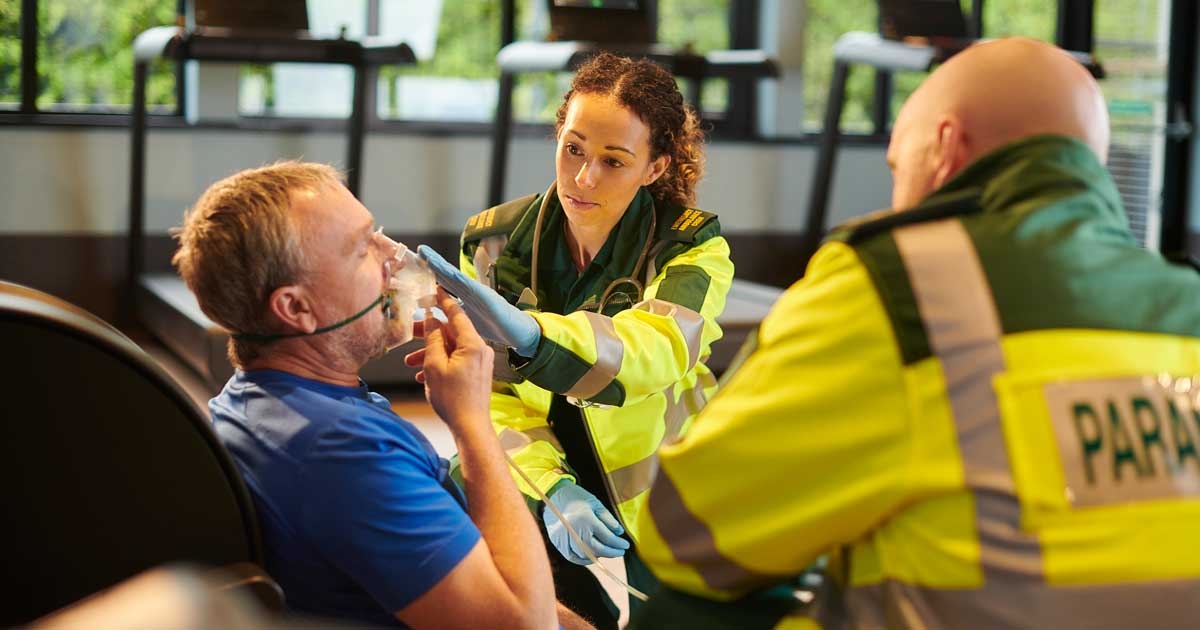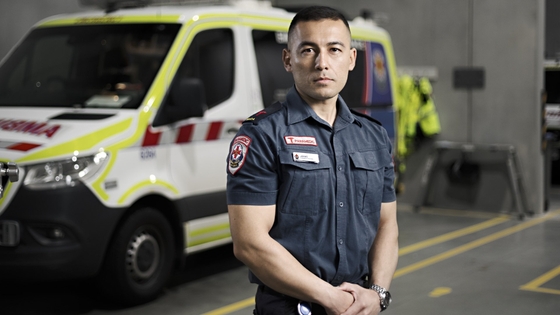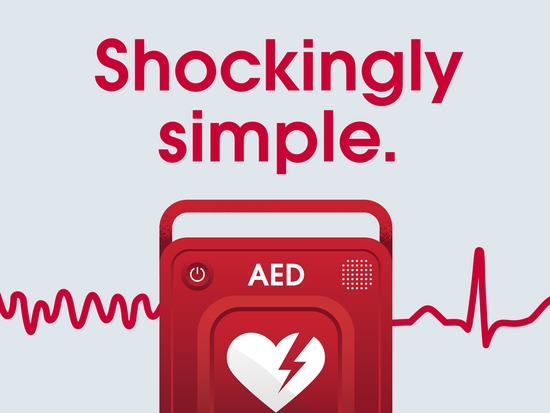
Heart attack vs cardiac arrest – know the difference
Blog: 15 June 2023
You have no doubt heard of a heart attack. And you’ve probably also heard of a cardiac arrest. Chances are, you’ve heard the terms being used interchangeably to describe a serious heart event.
But the truth is, they are actually very different.
What is a heart attack?
A heart attack is essentially a problem with the heart’s “plumbing.”
During a heart attack, one or more of the arteries that take blood to the heart’s own tissue becomes blocked or narrowed. This means that less blood (and consequently less oxygen) is delivered to the heart muscle. The heart muscle in the area being fed by the blocked artery becomes damaged and can die. The blockage in the artery can be because of a build-up of fat and cholesterol (a plaque), or sometimes it is due to a severe spasm of the artery wall that causes the artery to narrow temporarily, restricting blood flow to the heart muscle. Usually, the heart keeps beating during a heart attack. Some of the most commonly experienced symptoms of a heart attack are:
- pain and tightness in the chest
- pain spreading to arm, jaw, neck, back
- trouble breathing
- coughing and/or wheezing
- nausea
- anxiety
- feeling faint.
Chest pain is the most common symptom of a heart attack, but you won’t necessarily experience all of the symptoms – heart attacks are not always experienced the same way which is why it's important to know all the warning signs. Learn more about heart attack warning signs and order or download a warning signs action plan.
What is a cardiac arrest?
In the same way as a heart attack is a problem with the heart’s “plumbing”, a cardiac arrest can be thought of as an “electrical” problem. During a cardiac arrest, there is a problem with the signals that tell the heart when and how to contract. This means that it either stops beating or isn’t beating enough to get your blood moving around your body as it should be. This can be caused by abnormal heart rhythms (arrythmias), cardiomyopathies, which affect the tissue of the heart, congenital heart diseases that are present from birth, or sometimes a traumatic event that causes a large amount of blood loss (a hemorrhage). The symptoms of a cardiac arrest are more uniform and present the same way in most people. They are:
- loss of consciousness
- not breathing at all or not breathing normally
- no pulse
Are heart attacks and cardiac arrests common?
Each year, approximately 57,000 heart attacks and 25,000 cardiac arrests happen to people living in Australia. Sadly, heart attacks claim the life of 18 Australians each day. If treated quickly (with CPR or a defibrillator) you can survive a cardiac arrest, although currently only approximately 5–10 % of people survive. The survival rate for a heart attack is much higher, over 60%. However, if untreated, a heart attack can lead to a cardiac arrest.
How can I prevent a heart attack or cardiac arrest?
We can’t guarantee that you can prevent a heart attack or cardiac arrest. But there are lots of things that you can do to lower your risk of having one. One key way to help prevent a heart event is living a healthy lifestyle. That means keeping active, following a heart healthy eating pattern, stopping smoking and limiting alcohol. If you are over 45, or over 35 if you are Aboriginal or Torres Strait Islander, it is also a great idea to visit your GP for a Heart Health Check!
What do I do if I think someone is having a heart attack or cardiac arrest?
Both heart attacks and cardiac arrests and are medical emergencies. Call 000 immediately. The operator will be able to ask questions to determine what is happening and send help.
Our partner, Heart of the Nation, offer a free online training course to build confidence in responding to sudden cardiac arrest. Increase your knowledge, overcome any personal barriers, and learn practical tips to help you Call, Push, Shock. Register here.
You might also be interested in

Heart attack warning signs
Free heart attack warning signs education, action plans and videos to help you understand your heart and the warning signs to look out for.

What is cardiac rehab?
Cardiac rehab is proven to keep you out of hospital and reduce your risk of death from heart conditions.

An AED can help save lives
Learn what an AED is and what you can do during a cardiac arrest.
Last updated14 October 2024